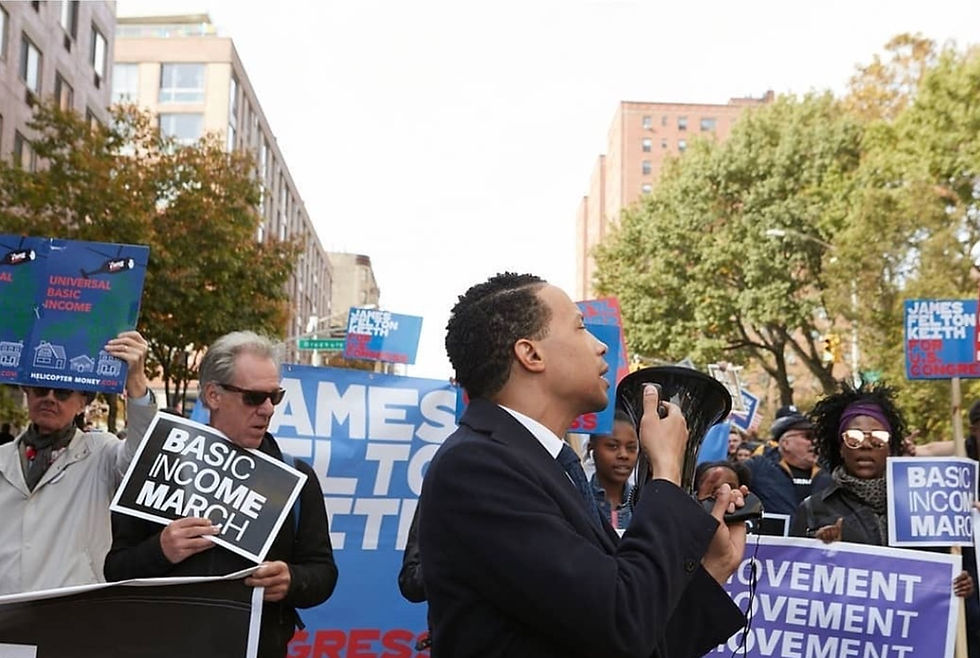Voting Rights Ends
- James Felton Keith

- Oct 15
- 3 min read
The Supreme Court is keen to end Voting Rights for racial minorities !!!

Risks & Red Lines
Eliminating race-conscious remedies: If remedial racial districting becomes unconstitutional, that could void many existing maps and block future ones—even when clearly needed to remedy past discrimination.
Statutory vs. constitutional conflict: The Court may be setting up a clash between Section 2 (which demands race awareness in some cases) and a newly asserted constitutional colorblindness approach. The Court might pick the Constitution in that conflict.
Chilling effect on litigation: If plaintiffs must meet tougher burdens, civil-rights groups may pull back from challenging bad maps—meaning de facto unchecked power for heavily gerrymandered states.
Why This Matters Now
The Supreme Court has already cut out Section 5 (Shelby County v. Holder 2013).
It weakened Section 4(b) (the coverage formula).
It’s now targeting Section 2 (Louisiana v. Callais, Brnovich v. DNC 2021).
If the Court continues down this road, the Voting Rights Act’s teeth are gone — leaving only the Constitution’s vague Equal Protection Clause, which is harder to prove and doesn’t stop discrimination in advance.
In One Sentence
Provision | Applies To | Timing | Focus | Current Status |
Section 2 | Whole U.S. | After discrimination | “Results” of racial discrimination | Still active, under attack |
Section 5 | Historically discriminatory states | Before discrimination | “Intent” & “Effect” (preclearance) | Dead since Shelby County v. Holder (2013) |
Here’s a sharpened-up synopsis of what’s going on right now (based on today’s AP coverage) — and how the Court seems to be marching down a path toward gutting race-based voting protections. Think of this as the “road map” they seem to be following.
Key developments from today
From the AP live updates, a few themes stand out:
The Supreme Court is probing whether even remedial race-based districting (done under Section 2 obligations) might itself run afoul of the Constitution. AP News
Justices repeatedly questioned whether the creation of majority-minority districts is constitutional in itself, regardless of past discrimination. AP News
Some Justices expressed concern about “racial sorting” or race as a predominant factor in drawing districts — suggesting skepticism or hostility toward maps overtly drawn on racial lines. AP News
There is tension over whether courts should second-guess the legislature’s decision about the number of majority-minority districts. Some Justices seemed uneasy about courts effectively substituting their judgment for political branches. AP News
The Court appears interested in reframing the legal tests themselves — possibly tightening or altering how Section 2 or equal protection doctrine applies in redistricting. AP News
Taken together, these are not benign procedural tweaks. The signals suggest the Court is laying groundwork for a more dramatic shift.
The Likely Path: How Protections Could Be Whittled Away
Here’s the sequence I see unfolding (if the Court continues on its current trajectory):
Stage | Mechanism | Consequence / Weakening of Protection |
1. Reconceptualizing “predominance” | The Court may declare that race must rarely (or never) be a predominant factor in drawing districts — even as a remedial measure. | That would dramatically shrink the space in which states can use race as a factor in redistricting. |
2. Tightening “narrow tailoring” | Even if a district is race-based under §2, the Court may demand stricter evidence to justify it (i.e. that alternative means won’t work). | Many remedial maps could fail under stricter scrutiny. |
3. Constitutional bar on remedial race use | The Court flirted with the question of whether creating a majority-minority district itselfviolates the 14th or 15th Amendments. | If the Court holds that it’s unconstitutional to draw districts on racial lines even to remedy discrimination, §2 becomes toothless in many scenarios. |
4. Undermining §2’s reach | The Court could narrow who can sue under §2 or raise the standards for proving vote dilution to the point that fewer claims succeed. | Fewer challenges will survive; redistricting and voter suppression laws become harder to contest. |
5. Institutional deference to legislatures | The Court may push courts to give heavy deference to legislatures’ judgment, especially about how many protected districts to create. | Courts less likely to override maps won by legislatures, even when minority voters allege dilution. |
If the Court fully embraces this path, the net effect would be: a rollback of enforceable federal protections that allow States to consider race in fixing discrimination — shrinking what minority communities can do under federal law to combat voter dilution.



Comments